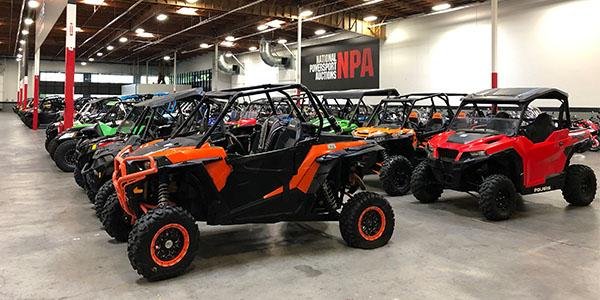Overview
The North America All-Terrain Vehicle (ATV) and Utility Task Vehicle (UTV) Market is thriving, driven by a surge in off-road recreational activities, agricultural modernization, and military utility. The region is home to some of the world’s most rugged terrains and largest ATV/UTV user bases, with the United States accounting for a significant market share. The market is expected to continue its upward trajectory, growing at a CAGR of 6–8% through 2030.
Key drivers include:
- Increasing demand for outdoor adventure sports and off-road tourism
- Widespread use of UTVs in agriculture, construction, and forestry
- Technological advancements including electric drivetrains and GPS integration
- Growth in youth motorsport and trail expansion projects across the U.S. and Canada
Segmentation
- Key Categories
- By Vehicle Type:
- All-Terrain Vehicles (ATVs)
- Sport ATVs
- Utility ATVs
- Utility Task Vehicles (UTVs)
- Recreational UTVs
- Heavy-duty UTVs
- Multi-passenger UTVs
- By Fuel Type:
- Gasoline
- Electric
- Diesel
- By Application:
- Sports & Recreation
- Agriculture
- Military & Defense
- Industrial Use
- Hunting & Trail Riding
- Target Demographics
- Outdoor enthusiasts & youth riders
- Farmers & ranchers
- Construction & industrial firms
- Rescue & law enforcement units
- Tourism companies & park services
- Geographic Focus
- United States
- Canada
- (Note: Although titled North America, Mexico sees limited market penetration compared to the U.S. and Canada)
Key Players
- Polaris Industries Inc. (U.S.)
- Market leader in ATVs and UTVs.
- Focuses on innovation with electric models like the RANGER XP Kinetic.
- Offers diversified product lines for both recreational and commercial use.
- BRP Inc. (Canada) – Maker of Can-Am
- Known for high-performance models in both sports and utility segments.
- Strong dealer network across the U.S. and Canada.
- Honda Motor Co., Ltd.
- Offers rugged, affordable ATVs and side-by-sides with fuel efficiency.
- Known for durability and low maintenance costs.
- Yamaha Motor Corp.
- Strong presence in recreational ATV and UTV segments.
- Incorporates advanced features such as GPS, winches, and adjustable suspensions.
- Kawasaki Heavy Industries
- Offers both workhorse UTVs and sport-oriented ATVs.
- Investing in hybrid and electric technologies.
Regional Analysis
United States
- Largest ATV/UTV market globally, with applications in farming, ranching, hunting, and recreation.
- States like Texas, Utah, Arizona, and California lead in off-road usage.
- Government initiatives support rural vehicle utility and tourism development.
Canada
- High demand for UTVs in forestry and rural logistics.
- Provinces like British Columbia and Alberta have vast terrain suitable for utility vehicles.
- Recreational market growth linked to rising disposable income and outdoor sports popularity.
Latest Developments (2025 Outlook)
- Electric ATVs and UTVs:
- Increasing launches of eco-friendly electric models.
- Governments pushing for reduced emissions from off-road vehicles.
- Connected Vehicles & GPS:
- UTVs equipped with trail navigation, real-time location tracking, and app-based diagnostics.
- Safety Enhancements:
- Rollover protection systems (ROPS), smart braking, and adaptive suspension becoming standard.
- Customization & Modular Designs:
- Consumers demand accessories such as winches, snowplows, heaters, and cargo beds.
- Aftermarket parts industry booming.
- Military Procurement:
- Lightweight, high-torque electric UTVs being tested for surveillance and logistics in defense applications.
- Regulatory Developments:
- New trail usage laws and emissions standards impacting design and sales patterns.
- Safety and licensing requirements vary by state/province.
Conclusion & Future Outlook
The North America ATV and UTV Market is not just a niche off-road segment—it is a multi-billion-dollar ecosystem that spans recreation, industry, and defense. As sustainability, connectivity, and utility become central to vehicle design, the market will pivot toward electric and smart UTVs over the next five years.
Manufacturers who combine performance, durability, and innovation will lead the charge, especially as customer expectations rise across both premium and utility-focused segments. The future of this market is firmly grounded in mobility versatility, terrain adaptability, and technological agility.
More Related Reports:
